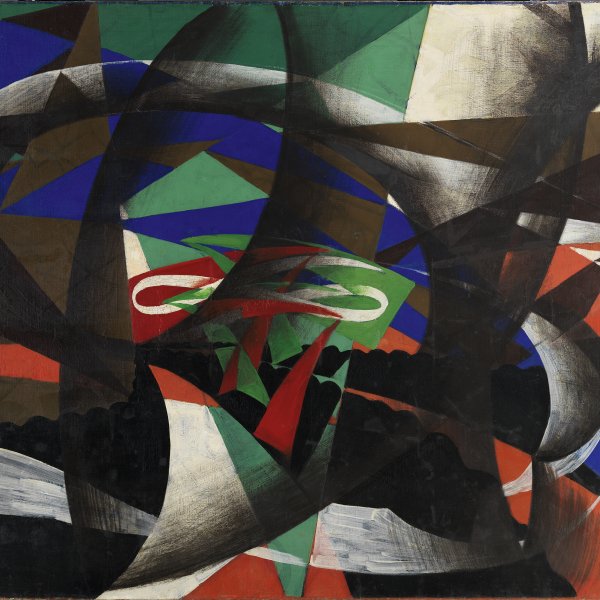Giacomo Balla
Turin, 1871-Rome, 1958
Giacomo Balla was one of the leading members of the Italian Futurist movement. A self-taught artist, he studied for a time at the Accademia Albertina in Turin and moved to Rome in 1895. In 1900 he lived for a few months in Paris, where he visited the Exposition Universelle. He was impressed by life in the great metropolis and studied the Neo-Impressionist paintings of Georges Seurat, Paul Signac and Henri-Edmond Cross. On returning to Rome, he spread the Divisionist technique among young artists such as Umberto Boccioni, Gino Severini and Mario Sironi.
In 1910 Balla joined the Futurist movement by signing La pittura futurista Manifesto tecnico, but his works were not shown in the group’s exhibitions until 1912. In the works produced in this period Balla strove to represent movement and speed, based on the chrono-photographs of Étienne-Jules Marey. From 1913 onwards his compositions became more abstract, and representation of the breakdown of motion gave way to new spiral structures, and the study of movement was replaced by an analysis of the deconstruction of light. In 1915 he and Fortunato Depero signed the Futurist Reconstruction of the Universe manifesto extending the Futurist principles to all aspects of daily life.
Like the other members of the Futurist group, Balla was a convinced, active nationalist. In 1915 he and Filippo Tommaso Marinetti were arrested for taking part in a demonstration calling for Italy to join in the war, and during this period Balla’s studio became a meeting place for artists. Thenceforward Balla developed an interest in constructing mobile objects from paper, cardboard, fabric and wire, which he called plastic complexes, and in 1917 he began to work as a set designer for Stravinsky’s Feu d’artifice performed by the Ballets Russes of Serge Diaghilev, who had sought refuge in Rome during the war. In the 1930s he returned to a Fascist-inspired figurative painting, which would mark his output until his death.
In 1910 Balla joined the Futurist movement by signing La pittura futurista Manifesto tecnico, but his works were not shown in the group’s exhibitions until 1912. In the works produced in this period Balla strove to represent movement and speed, based on the chrono-photographs of Étienne-Jules Marey. From 1913 onwards his compositions became more abstract, and representation of the breakdown of motion gave way to new spiral structures, and the study of movement was replaced by an analysis of the deconstruction of light. In 1915 he and Fortunato Depero signed the Futurist Reconstruction of the Universe manifesto extending the Futurist principles to all aspects of daily life.
Like the other members of the Futurist group, Balla was a convinced, active nationalist. In 1915 he and Filippo Tommaso Marinetti were arrested for taking part in a demonstration calling for Italy to join in the war, and during this period Balla’s studio became a meeting place for artists. Thenceforward Balla developed an interest in constructing mobile objects from paper, cardboard, fabric and wire, which he called plastic complexes, and in 1917 he began to work as a set designer for Stravinsky’s Feu d’artifice performed by the Ballets Russes of Serge Diaghilev, who had sought refuge in Rome during the war. In the 1930s he returned to a Fascist-inspired figurative painting, which would mark his output until his death.





